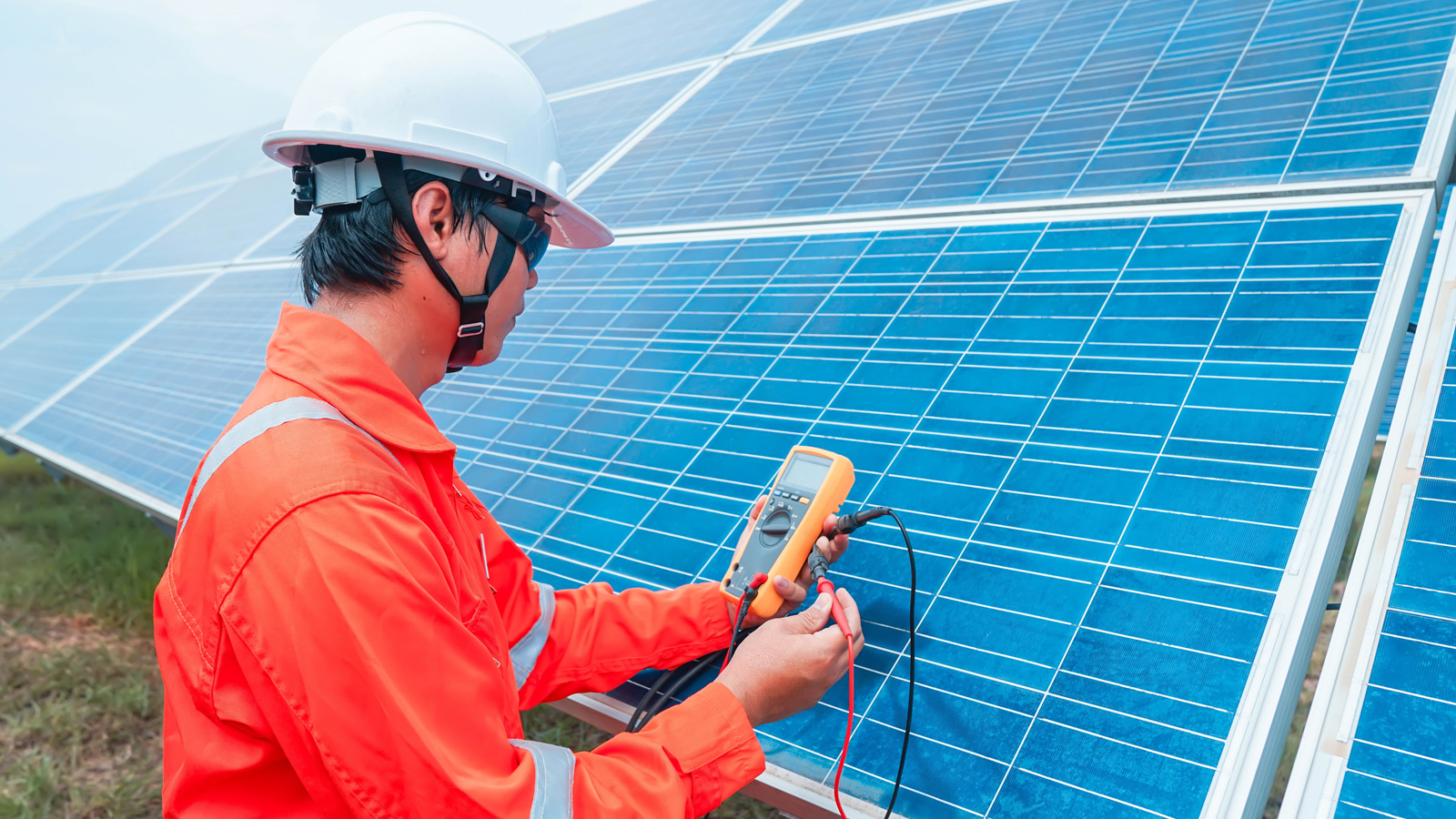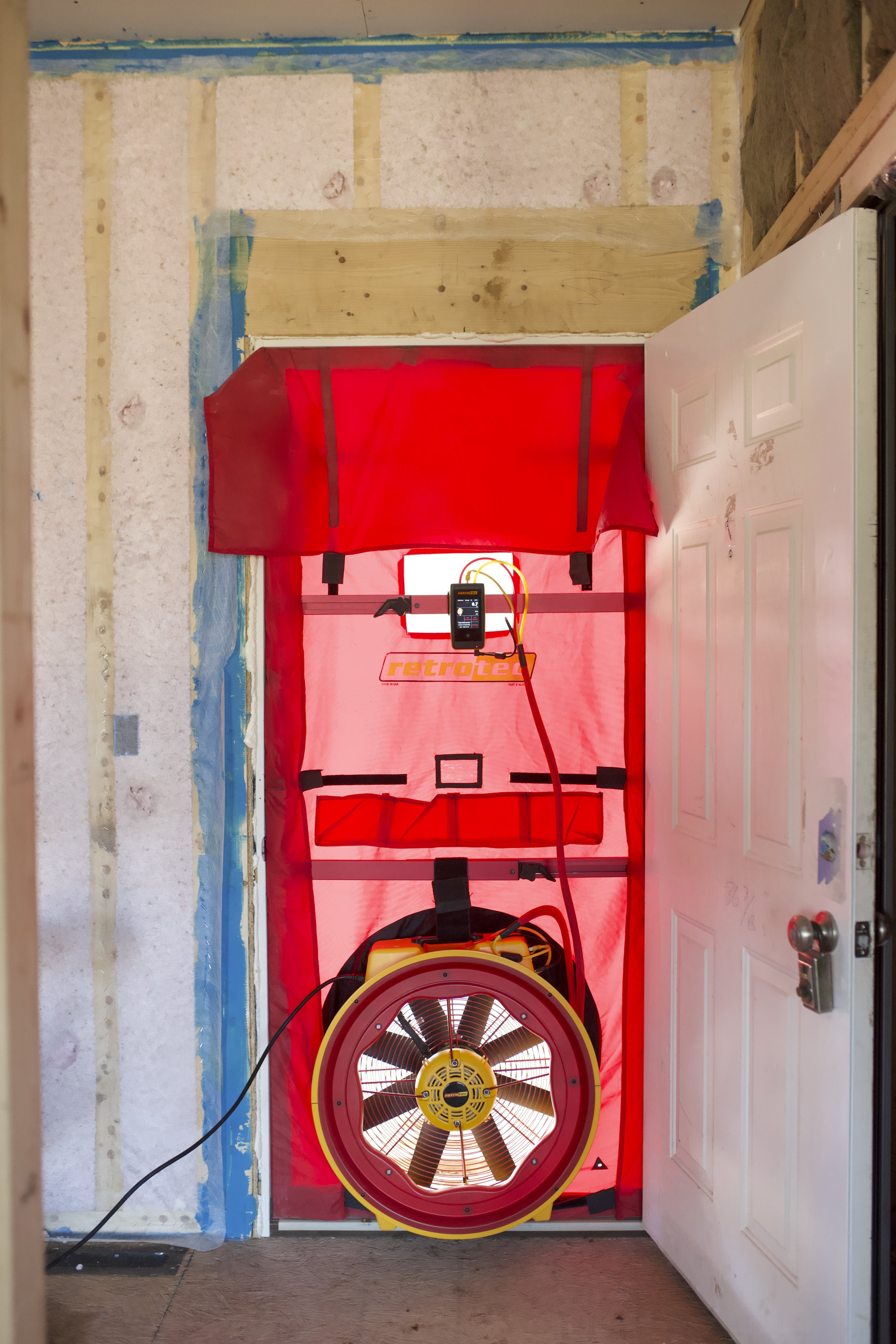Why energy loss = discomfort and how energy testing stops it
Why energy loss = discomfort and how energy testing stops it
Blog Article
The Duty of Power Testing in Achieving an Airtight Solution for Your Residential property
Energy screening is important for residential property owners looking for to produce an impermeable setting. It determines air leakages and ineffectiveness that can endanger power performance. Usual perpetrators include voids around doors and windows. Making use of methods like blower door examinations and thermal imaging, homeowners can get insights right into their home's vulnerabilities (energy testing). Comprehending these searchings for is important. What actions should be taken once air leakages are identified? The responses hold the trick to enhanced convenience and cost savings
Recognizing Energy Testing and Its Significance
Power screening plays an essential duty in assessing the airtightness of structures and structures. By measuring air leakage, this technique offers essential insights into a residential or commercial property's energy performance, thermal convenience, and overall performance. Airtight buildings reduce energy consumption, making certain that heating & cooling systems operate effectively. This screening process usually involves techniques such as blower door tests, which create a controlled atmosphere to recognize unintended air pathways.Understanding the importance of energy testing prolongs past conformity with building ordinance; it promotes a positive approach to sustainability. Identifying air leakages early can bring about prompt remediation, inevitably improving indoor air high quality and minimizing utility prices. Furthermore, power screening adds to the longevity of structure products by lessening dampness buildup and relevant damages. As understanding of ecological effect boosts, energy screening ends up being an indispensable device for building contractors and house owners going for high-performance buildings.
Usual Sources of Air Leaks in Characteristic
Identifying common resources of air leakages is vital for improving a residential or commercial property's energy performance. These leaks often happen in numerous locations of a structure, considerably influencing cooling and heating costs. Typical offenders consist of voids around windows and doors, where seals may deteriorate in time. Additionally, electric outlets and switches can produce paths for air exchange otherwise appropriately insulated. Cellars and attic rooms are likewise constant sources, specifically where wall surfaces satisfy the foundation or the roofing. Various other potential leakage factors include plumbing infiltrations, airing vent systems, and the locations bordering chimneys. Moreover, older buildings might deal with broken down structure materials, boosting vulnerability to air infiltration. By identifying these typical resources, homeowner can take positive steps to seal leaks, consequently improving total power efficiency and comfort within their spaces. Resolving these issues is an important part of establishing a closed remedy for any residential property.
Approaches of Power Screening: Blower Door and Thermal Imaging
Effective power screening approaches, such as blower door tests and thermal imaging, play a vital duty in diagnosing air leaks within a home. The blower door test includes pressurizing or depressurizing a structure to measure airflow and identify leaks. An adjusted follower is set up in an exterior doorway, and the resulting stress difference highlights areas of undesirable air seepage. This approach evaluates the general airtightness of the structure.Thermal imaging complements blower door examinations by aesthetically finding temperature variations on surface areas, revealing surprise air leakages. Infrared video cameras capture warmth loss or gain, permitting specific identification of problem locations, such as inadequately insulated walls or gaps around doors and windows. air tight solutions. With each other, these approaches give a thorough analysis of a home's power performance, making it possible for residential property owners to address air leaks efficiently and enhance overall efficiency
Benefits of Identifying Air Leaks
Determining air leakages provides significant benefits for power efficiency and indoor convenience. By sealing these leaks, buildings can lower energy intake, bring about reduced energy expenses and a reduced carbon footprint. Furthermore, enhanced airtightness contributes to a much more stable interior setting, enhancing general comfort for occupants.
Power Performance Improvements
Discovering air leaks is important for enhancing power efficiency in structures. Identifying these leaks enables residential or commercial property owners to resolve areas where conditioned air escapes or unconditioned air goes into, resulting in substantial energy cost savings. By sealing spaces and fractures, buildings can preserve a constant temperature level, decreasing the demand on home heating and cooling down systems. This not just decreases energy bills however likewise lessens the ecological influence related to increased power usage. Additionally, energy efficiency improvements contribute to a structure's total sustainability, making it an extra eye-catching alternative for eco-conscious customers or tenants. Ultimately, focusing on air leakage discovery and removal helps maximize power usage, advertises liable resource monitoring, and sustains lasting monetary benefits for homeowner.

Boosted Indoor Convenience
Addressing air leaks not just results in energy savings but also significantly improves indoor comfort. When air leakages are successfully identified and sealed, temperature level guideline within a property comes to be much more efficient. This causes consistent indoor temperatures, getting rid of chilly drafts in winter and locations in summertime. Boosted insulation also minimizes noise pollution from outdoors, producing a quieter and more relaxed living setting. Additionally, enhanced air high quality is achieved by reducing the infiltration of outdoor contaminants, allergens, and humidity, contributing to the overall wellness of passengers. Subsequently, home owners experience an even more positive ambience, promoting relaxation and performance. Inevitably, rectifying and acknowledging air leaks is essential for achieving optimal interior comfort throughout the year.
Just How Power Testing Boosts Comfort and Indoor Air Quality
Power screening plays a vital duty in improving temperature regulation within indoor rooms, ensuring a comfortable and regular environment. By sealing and determining air leakages, it additionally greatly minimizes the infiltration of contaminants, therefore boosting indoor air high quality. This twin effect cultivates total health for owners.
Enhanced Temperature Level Policy
Effective temperature law considerably contributes to both comfort and indoor air high quality, making it a critical focus for contemporary structure layout. Power testing plays a vital role in achieving this guideline by identifying areas where warmth loss or gain occurs, enabling targeted enhancements. By making sure an airtight building envelope, power screening helps preserve regular indoor temperatures, reducing the requirement for extreme home heating or cooling. This security improves resident convenience, as fluctuations in temperature can cause discomfort and dissatisfaction. Furthermore, reliable temperature control can improve indoor air high quality by reducing the risk of condensation and mold growth, which prosper in irregular temperature level problems. Power screening is important for enhancing temperature monitoring in business and property properties.
Lowered Pollutant Infiltration
While numerous factors add to interior air high quality, minimized toxin infiltration stands apart as a vital element that energy screening can substantially enhance. Power screening identifies air leakages and powerlessness in a building's envelope, which might allow exterior contaminants, allergens, and dampness to go into interior spaces. By securing these leaks, homes can effectively restrict airborne contaminants, bring about a healthier setting. Improved airtightness not just improves convenience however also lessens the problem on heating and cooling down systems, resulting in power cost savings. Furthermore, Clicking Here reduced contaminant infiltration fosters much better general well-being for passengers, as cleaner air promotes respiratory health and wellness and decreases allergic reaction symptoms. Subsequently, energy screening plays a critical role in producing both an energy-efficient and health-conscious living area.
The Financial Effect of Energy Testing on Energy Costs

Steps to Take After Power Screening Results
As soon as power screening results are in, home owners must meticulously evaluate the searchings for to determine one of the most efficient course forward. The initial step includes recognizing the locations that require improvement, such as air leaks or insulation deficiencies. House owners ought to then prioritize repairs based on the severity of the issues and their prospective influence on energy efficiency.Next, it is a good idea to speak with specialists who focus on energy performance to create a detailed action plan. This might include solutions like securing gaps, including insulation, or upgrading windows and doors.After executing the required modifications, a follow-up energy test can identify the effectiveness of the fixings. Continual monitoring is likewise vital to ensure that the building maintains its closed standing gradually. By adhering to these steps, home owners can significantly enhance their building's power effectiveness, resulting in reduced energy expenses and improved comfort.
Regularly Asked Questions
Just how Usually Should I Conduct Power Testing on My Home?
The frequency of energy screening need to generally be every few years, or following significant renovations. Normal evaluations help recognize effectiveness enhancements and guarantee that the property preserves perfect energy performance gradually, adapting to altering problems.
Is Energy Screening Necessary for New Constructions?
Power testing is vital for brand-new constructions, as it recognizes possible air leakage and insulation concerns - energy testing. Applying these examinations warranties energy performance, boosts indoor convenience, and meets building regulations, inevitably bring about long-term expense savings
Can I Perform Power Screening Myself?
Energy testing generally requires specialized tools and know-how. While some home owners may try standard assessments, professional solutions ensure precise outcomes and reliable recognition of issues, eventually causing much better energy performance and convenience in living rooms.
What Is the Cost of Expert Power Screening Services?
The price of specialist power screening solutions normally ranges from $300 to $1,500, depending upon building location, dimension, and intricacy. Property owners need to take into consideration potential power financial savings when examining the financial investment in these solutions.
How Much Time Do Power Testing Outcomes Usually Last?
Power testing results normally stay legitimate for one to three years, relying on elements like building alterations and environmental modifications. Routine updates are advised to assure precision and maintain website link reliable energy effectiveness standards. Effective energy screening approaches, such as blower door tests and thermal imaging, play a necessary duty in detecting air leakages within a property. Recognizing these leaks allows residential property owners to attend to locations where conditioned air escapes or unconditioned air goes into, leading to significant energy financial savings. Power testing identifies air leaks and weak points in a building's envelope, which might permit exterior contaminants, allergens, and dampness to enter interior areas. As house owners significantly look for to reduce their energy costs, the function of power testing becomes crucial in determining leakages and ineffectiveness. House owners must then prioritize fixings based on the severity of the issues and their potential influence on energy efficiency.Next, it is advisable to seek advice from with specialists who specialize in power performance to create a thorough action plan.
Report this page